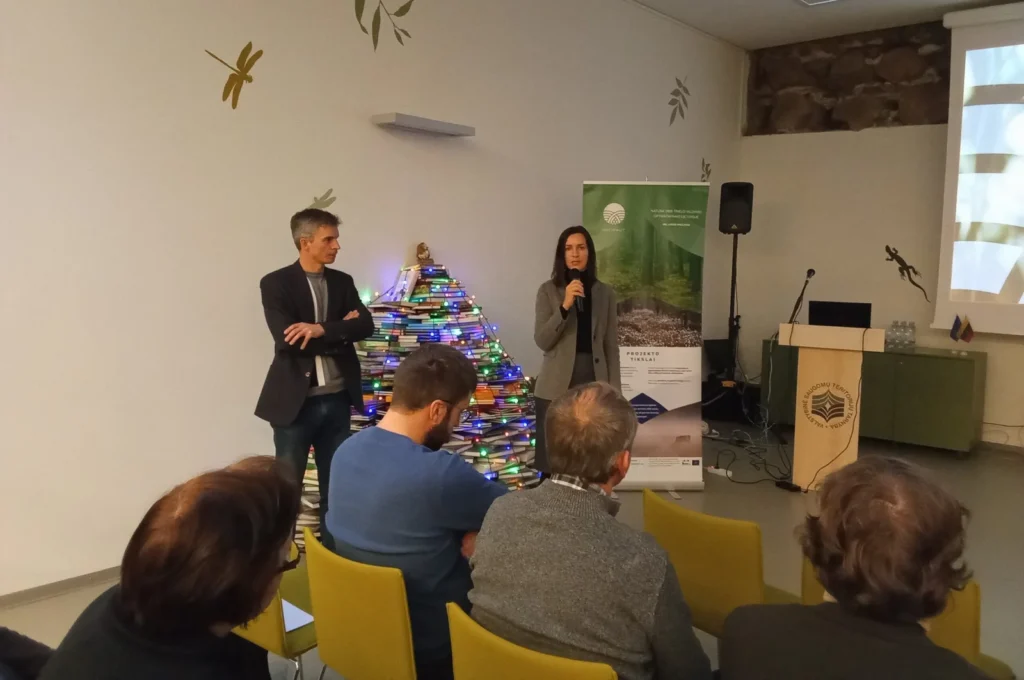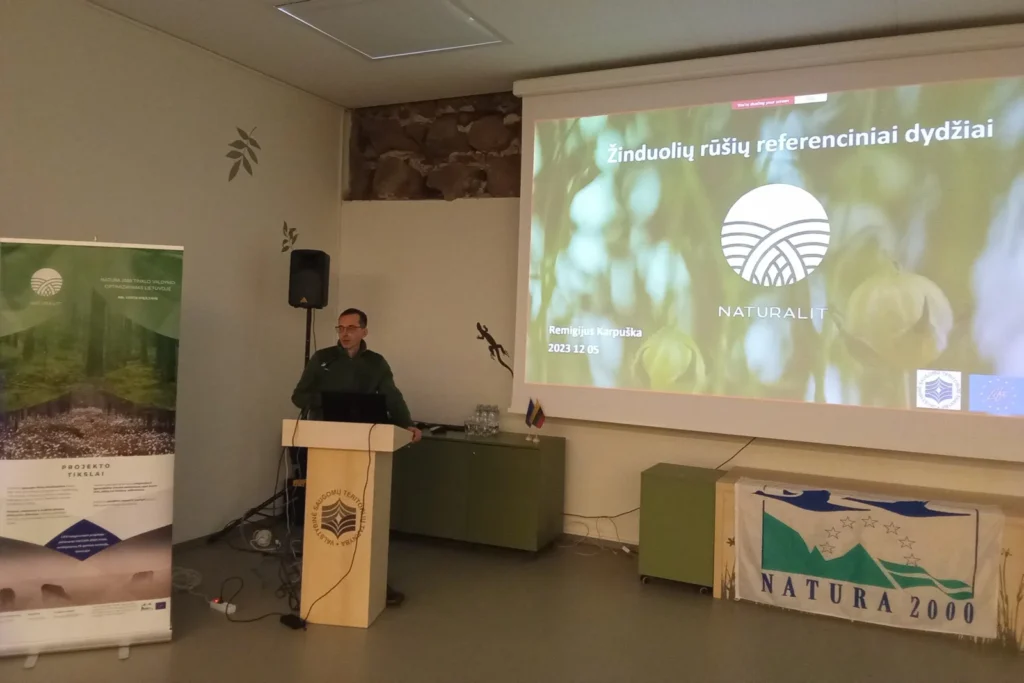
Photo: Dalius Dapkus
5 December 2023 An event was held at the Visitor Centre of the State Service for Protected Areas (hereinafter – SSPA) to present the results of five years of work carried out by the experts of the Methodological-Analytical Centre in collecting and analysing information on Species of European Community (hereafter – CoE) importance.
According to Dr. Dalius Dapkus, Head of the Methodological-Analytical Centre of the VSTT, each European Union (EU) Member State is required to report periodically, every six years, on the conservation status of species and habitats. The last report was produced by the SSTS in 2019, so a new report is due in 2025, starting next year. To assess the conservation status of a species, national-level indicators are used – the reference values for the favourable conservation status of a species, i.e. the numbers that define how favourable the status of a species is considered. The concept of favourable reference value is derived from concepts used in the EU Habitats Directive (1992), in particular the definition of favourable conservation status, which relates directly to the natural range and population size that would ensure the long-term survival of the species.
The favourable reference size for a species comprises two dimensions: 1) its population size and 2) the range it occupies. A favourable reference population size is the population size in a biogeographical region that is considered to be the minimum necessary to ensure the long-term viability of a species. Favourable reference range at the national level is the proportion of the species’ range within a country that covers the various ecological variations of the species and is large enough to ensure the long-term survival of the species. If the population of a species falls below the minimum viable population, there is a chance that we will lose the species in the country.

Photo: Dalius Dapkus
The unit of reference population size is the number of individuals, or the area covered by the population, expressed in arbitrary squares (usually 1 × 1 km areas), depending on the ecological characteristics of the groups of organisms or species. For example, terrestrial plants are usually valued in terms of the number of individuals, but in other countries, for example, hard-to-reach plant species that grow in mountains or invertebrate species that are difficult to count in terms of individuals, may be valued in terms of the arbitrary unit of the area in which they are located, the quadrats.
Algirdas Klimavičius, Head of the Nature Conservation Policy Group at the Ministry of the Environment, believes that the establishment of favorable reference values is an important step in objectively assessing species conservation efforts and measuring progress in this area. Knowing the actual status of a species allows us to measure the “gap” to the target of favorable reference values.

Photo: Dalius Dapkus
Lithuania and its territorial sea contain 54 natural habitat types of EC importance and 106 plant and animal species of EC importance for which Special Protection Areas have been established, as well as more than 40 species of EC importance that require strict protection. The national conservation objectives for natural habitats of EC importance are already set out in Annex 4 of the Action Plan for the Conservation of Landscape and Biodiversity 2015-2020, approved by Order No D1-12 of the Minister of the Environment of the Republic of Lithuania on 9 January 2015.
The establishment of favorable reference values and conservation targets for species of EC importance at the national level is one of the results of the LIFE Programme Integrated Project “Optimizing the Management of Natura 2000 Network in Lithuania” (LIFE-IP PAF-NATURALIT No. LIFE16 IPE/LT/016). The results of the inventory of species of EC importance, data from the Protected Species Information System, state environmental monitoring, data from reports on the status of species of EC importance submitted to the European Commission, data from the Atlas of Breeding Birds of Lithuania, scientific articles and publications, and other data have been used to determine the favorable reference values for EC species of importance. Scientists from the Nature Research Centre helped to establish reference values for fish species.

Photo: Dalius Dapkus
Funded by the European Union LIFE programme. The contents of this publication are the sole responsibility of and do not necessarily reflect the opinion of the European Union.
